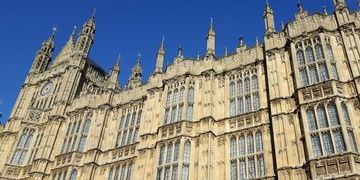James Tooze delves into the recent ONS publication of how government departments spend money on science, engineering and technology (SET)
CaSE reviews Government expenditure on SET
15 Jun 2018
This week’s release of the SET stats is the first glimpse of figures following the 2015 Spending Review but it predates more recent announcements made at the 2016 Autumn Statement and beyond of additional funding for R&D. We will have to wait a couple of years for the official statistics to include the measures linked to the Industrial Strategy, such as an additional £7bn in public funding of R&D by 2021/22 and to see whether we’re moving towards the aspiration to invest 2.4% of the UK’s GDP on R&D by 2027. The figures from the ONS do allow us to provide an insight into where and how public money is being invested across government, to review investment trends and will form part of our wider work in holding Government to account on its R&D spending to ensure it is spending it well.
The UK Government expenditure on science, engineering and technology (SET) focus on net expenditure in different parts of government. The GERD statistics published earlier in the year look at total expenditure on R&D from all sources – public, private, overseas etc. SET statistics give a helpful breakdown of R&D across government departments and more recently also provide a breakdown by Frascati definition as well as attempting to classify research by its socioeconomic objective, such as advancement of knowledge, health, defence, agriculture… We’ll do some additional work digging into the figures in the weeks ahead.
Headlines
In 2016, the UK Government invested £11.5bn in SET. In real terms that is a 1% drop in expenditure from 2015.
| Categories of Government spending | 2016 SET funding (£bn) | Percentage of total |
| Research Councils | 3.4 | 30% |
| Civil Departments | 3.3 | 29% |
| HE Funding Councils | 2.2 | 20% |
| Defence department | 1.6 | 14% |
| Contributions to EU R&D programmes | 0.9 | 8% |
| Total | 11.5 | 100% |
UK Research Councils have consistently made up the largest proportion of spend in SET, at £3.4bn in 2016. This is now closely followed by Civil Departments, which was the only area to see a real terms increase from £3.2bn in 2015 to £3.3bn in 2016.

These figures are representative of a longer trend. When looking at figures from 2009 (we picked this year as BEIS’ predecessor BIS was formed), Civil Department expenditure on SET has increased by 21% in real terms.
For the rest, the long term trend echoes the picture this year with Research Council expenditure on SET since 2009 down by 5% in real terms, along with Higher Education (HE) Council funding (down 16%) and Defence funding (down 17%). UK Government expenditure on SET reached a low point in 2011/2012, however Research Council and HE Funding Council expenditure was still lower in 2016 than in 2011.
SET funding overall has risen by some £600m in real-terms since its low point in 2011 and Civil department expenditure on SET is closing the gap with the largest funder, Research Councils, over the past few years. This trajectory has predominantly been driven by changes to BIS/BEIS budgets with other departments seeing major cuts as discussed later.

Departmental spend on SET
This release also gives us the opportunity to see how expenditure on SET is distributed across government departments. As the department responsible for science, research and innovation, it is perhaps of little surprise that BEIS in the primary spender on SET. This was not always the case however, as the NHS was a long-time leader in SET expenditure and continues to spend over £1bn a year on SET.

In 2016 prices, Civil Department expenditure on SET has increased by £573m since 2009. The overall increase in Civil Department expenditure on SET has been largely down to the huge boost for BIS/BEIS of just over £1bn, a real-terms budget increase of some 295%. The NHS has also seen an increase over this period (17%), as has DFID (31%).
This masks much of the disinvestment in R&D across other areas of Whitehall. For instance, DEFRA expenditure on SET was £89m (in 2016 prices) but suffered huge cuts to £59m in 2010 and £38 in 2011. Expenditure in 2016 recovered slightly, sitting at £53m. The stripping out of R&D budgets in other departments with smaller R&D spend is something we’ve reported on over a number of years.
Different types of research funded by Government
All of the expenditure that I have talked about here comes from the UK government. There are clearly a number of mechanisms and funding pots that the government supports, across various funding councils and government departments. With the SET stats, and an additional data set we requested from the ONS, it is possible to break down R&D expenditure by different research activity under Frascati definitions. The three main categories of R&D types are basic research, applied research and experimental development. You can read more about the details of these definitions here. What the data shows, is that the balance of types of research focused on by Research Councils and Civil departments is very different and complementary.


Research Councils continue to spend more on basic research, mainly purposed with advancing knowledge and can build a basis to solve current and future problems. There is a variance amongst Research Councils, the AHRC and STFC spend the majority of their expenditure on basic research, whereas the MRC and EPSRC are much closer to a 50:50 split on basic and applied funding.

These broad categories can also be broken down further, with interesting trends in the basic research funding portion of Research Council expenditure. STFC and AHRC, who spend a higher proportion on basic research also spend a high proportion on pure basic research – defined as being carried out for the advancement of knowledge without working for long-term economic benefit. Councils such as MRC and BBSRC spend all of their basic research funding on oriented-basic research – defined as containing the expectation that it will produce a broad knowledge base and likely form the background to the solution of recognised or expected current and future problems and possibilities.

The newly-formed UKRI brings together all of the above Research Councils, as well as Innovate UK and Research England. It will be interesting to track this balance of funding between Frascati types as UKRI takes shape and as the results-driven Industrial Strategy with its Grand Challenges begins to influence funding decisions.
Although the Government is continuing to spend on SET, clearly priorities have shifted in who controls this money. It is great to have the government committing to a much needed uplift in R&D investment. But if we’re to create a thriving environment for research and innovation in the UK, it matters how the money is spent. In the coming months CaSE will be looking more closely at what is being spent where by government and working with members and others to better understand the current picture, so that later in the year and in the run up to the next spending review we can make informed recommendations on spending it well.
Related resources

This synthesis draws out key policy implications from the findings of a report commissioned by the British Academy and CaSE. The systems-based analysis of the strengths and weaknesses within the UK’s innovation system, ‘From Research to Productivity: A Systems Analysis of UK Innovation Pathways’, was conducted by Cambridge Econometrics.

In 2024, the British Academy and CaSE commissioned Cambridge Econometrics and the Innovation and Research Caucus to conduct this systems-based analysis of the strengths and weaknesses within the UK’s innovation system.

CaSE’s comprehensive analysis of the measures that impact R&D announced in the 2025 Spending Review

CaSE’s response to the House of Lords Science, Innovation and Technology Select Committee inquiry into: Financing and Scaling UK Science and Technology: Innovation, Investment, Industry.